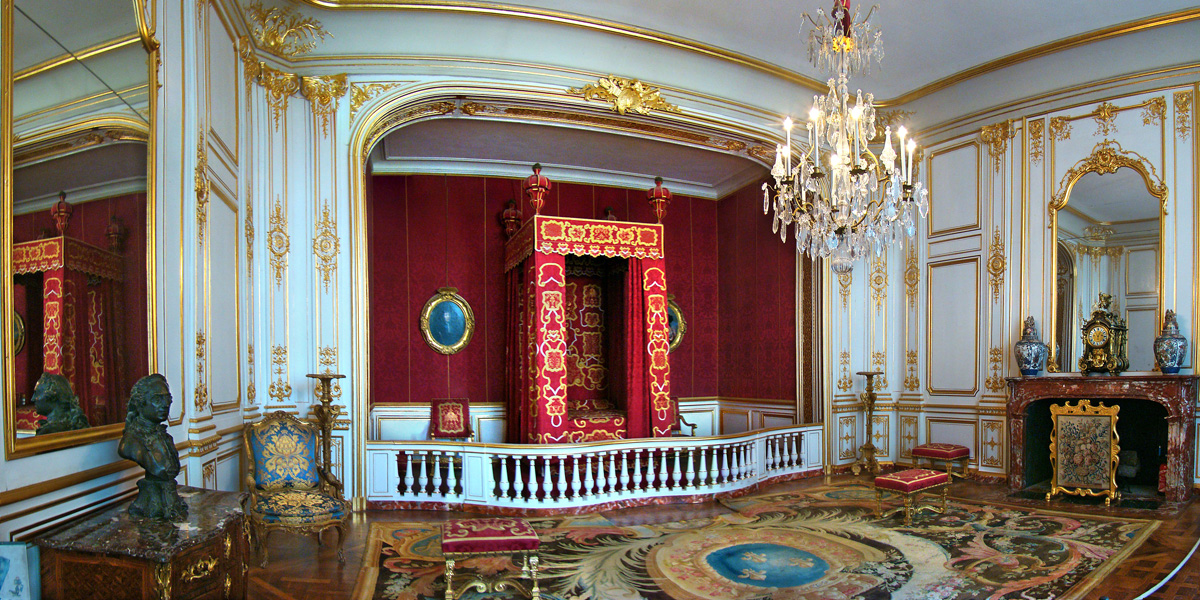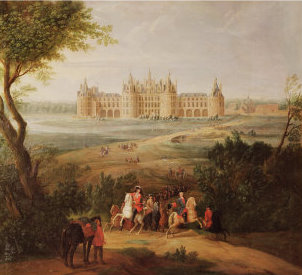Palais d'Or
I couldn't help but gasp as our coach came around the bend. What beauty! The chateau glimmered like a jewel. What's more, the library within proved to contain riches of information even more valuable than the shimmering exterior.
Alzamastry is the study of magic. More specifically, it's the study of vesanmer, and all related fields such as the movement of ghosts along the pathways, the storage of ghostly energy (vesanmer) in crystals (pathstones), and the control of that energy via Babelian.
The most renown research society in the world is La Société Royale de l'Alzamastrie. Founded in Paris in the 17th century, the society has grown into a powerful organization rivalling small nations. Although based in France, it has members from all over the world, and any aspiring alzamaster dreams of being admitted into the society some day. This academic society bases its operations out of a converted hunting lodge in the Loire Valley.
Purpose / Function
The building was originally constructed to be a hunting lodge for King Francis I. A century later, King Louis XIV restored the chateau for a hunting lodge of his own. Despite his fondness for the location, he eventually gifted it to the young Société Royale de l'Alzamastrie to be their headquarters.
As the headquarters of the Society, it became the epicentre of Alzamastric research worldwide. Scholars from all parts of the world travel to the chateau to research in their library, which hosts the most extensive collection of alzamastry books in the world. The second floor of the building is devoted to active research, with former state rooms converted to laboratories. To be invited to live in one of the chateau's apartments and command one of the available labs is the utmost compliment to a alzamaster.
alzamasters who do not live and work at the building still frequently visit to discuss their work with other scholars, attend lectures or debates, or present their work. Any meeting with the leaders of the society, such as an audience to request funding, will take place in the offices at the chateau. Additionally, the society arranges a few social events throughout the year, and these galas are almost always held in the chateau's grand ballroom.
The society is also responsible for safeguarding France's supply of pathstones. The crystals, both charged and empty, fill the keep's basements under close guard.
Architecture
The chateau was built with a gothic base, but the ornamentation is distinctive of the French renaissance style. It's impressive facade consists of white stone, sweeping arches, and steep roofs.

Le Doré
Muisca is famous for its mythical city of gold, allegedly hidden somewhere in the jungle. The city was named Le Doré(The Golden) by French colonists. After using Muiscan gold to cover the palace, the chateau received the nickname Le Doré de la France.The distinctive golden roof was added in 1745, shortly after the society's rule in French Muisca was finalized. The roofs of the chateau were coated in gold leaf from the abundant gold mines in the colony as a show of power. However, the golden roof has a practical purpose as well. Gold is, after copper, one of the best conductors of magical energy (Vesanmer) and the expanse of gold across the roof allows a handful of large pathstones in a central location to transmit power throughout the building.

Bedroom within the chateau by Tango7174
The interior of the chateau is elaborately decorated, with many furnishings being left from the Duke of Orléans' renovations.
Though the rooms converted to laboratories are much less decorated, the guest rooms, offices, and meeting chambers continue to evoke the impression of a royal palace - a display of just how much power and influence the society holds within France.
History
Our World History
Construction began on the Chateau de Chambord in 1519. It was built to be a hunting lodge for King Francis I, but he spent only 7 weeks in total at the chateau. Its remote location made it difficult to acquire food, so all food had to be brought to the building with every visit. When travelling with a retinue of 2,000 people, this proved cumbersome. Additionally, the beautiful high ceilings and wide windows made the building difficult to heat. The building typically sat empty, with all furnishings being moved in and out when the king desired a visit.
After Francis' death, the chateau sat abandoned for more than 80 years as no other French monarchs wanted to deal with the hassle of making it livable. In 1639, King Louis XIII gifted it to his brother, Gaston d'Orléans. The renovation work carried out by d'Orléans allowed the building to endure and not fall into complete disrepair.
Diverged History
During the reign of King Louis XIV, the Société Royale de l'Alzamastrie was formed in Paris. The society's goals were to consolidate research on Alzamastry and create a network of scholars. They quickly outgrew their humble origins in a Paris townhouse, and began searching for a larger building to serve as their headquarters.
Louis XIV, who rarely used the chateau for the same reasons as his predecessors, saw Alzamastry as the field that would secure France's position as a world power. Keen to keep the greatest achievements of science and magic in France, he offered the disused building to the society in 1685.
The society set themselves up in the building. By using pathstones to power central heating, the heating issue that had plagued past owners was not as much of a problem. They solved the food supply issue by converting some of the land in agricultural use. Over time, a village of scholars, families, and service industry workers sprang up around the new hub of learning. The woods were converted to farmland, and the chateau's fields were no longer needed. Only a small section of the original society farm remains, now used for research into agricultural applications of vesanmer.
Chateau de Chambord was renamed Palais d'Or in 1746, after the golden roofs were added, to cement its image as the centre of Alzamastry, disconnected from its past as a hunting lodge.
Type
Palace



